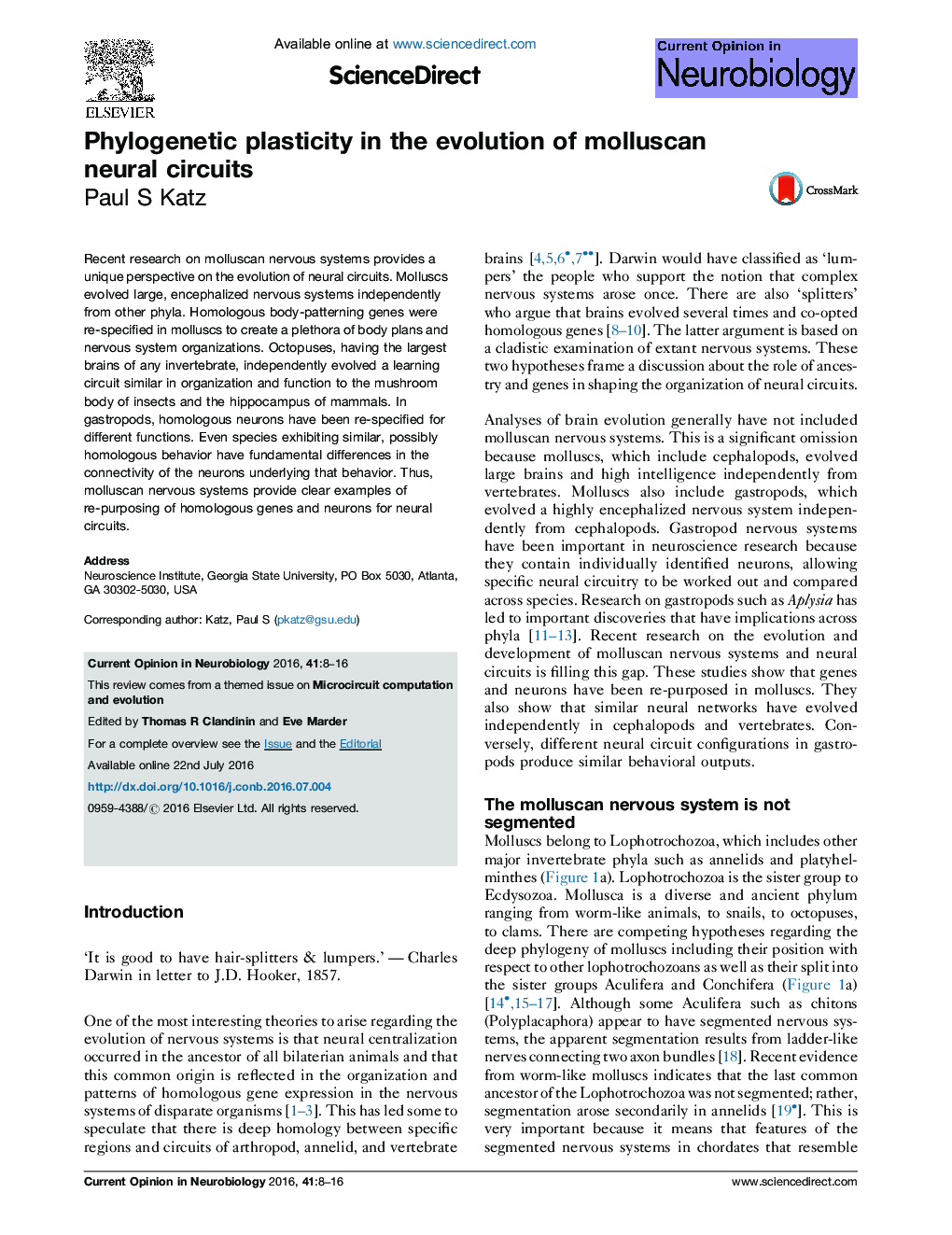| Article ID | Journal | Published Year | Pages | File Type |
|---|---|---|---|---|
| 6266092 | Current Opinion in Neurobiology | 2016 | 9 Pages |
â¢Molluscs evolved large brains independently from vertebrates using homologous morphogenic genes such as Hox, Pax, and ParaHox in novel ways.â¢Cephalopod brains have a learning circuit that sparsifies input in a manner similar to the insect mushroom body or the mammalian hippocampus and cerebellum.â¢Although octopus and cuttlefish have homologous circuitry in their vertical lobes, the sites of plasticity are diametrically different.â¢In gastropods, homologous neurons have been re-specified for different functions underlying different behaviors.â¢Even in species exhibiting similar behavior, neural circuits composed of homologous neurons are wired differently to produce different dynamics.
Recent research on molluscan nervous systems provides a unique perspective on the evolution of neural circuits. Molluscs evolved large, encephalized nervous systems independently from other phyla. Homologous body-patterning genes were re-specified in molluscs to create a plethora of body plans and nervous system organizations. Octopuses, having the largest brains of any invertebrate, independently evolved a learning circuit similar in organization and function to the mushroom body of insects and the hippocampus of mammals. In gastropods, homologous neurons have been re-specified for different functions. Even species exhibiting similar, possibly homologous behavior have fundamental differences in the connectivity of the neurons underlying that behavior. Thus, molluscan nervous systems provide clear examples of re-purposing of homologous genes and neurons for neural circuits.
Graphical abstractDownload high-res image (180KB)Download full-size image
